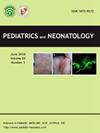Orbital complications of pediatric acute rhinosinusitis in the pneumococcal conjugate vaccine era
IF 2.3
4区 医学
Q2 PEDIATRICS
引用次数: 0
Abstract
Objectives
To evaluate the impact of the pneumococcal conjugate vaccines (PCVs) introduction on the orbital complications of acute rhino-sinusitis (OC-ARS).
Methods
A retrospective cohort study of all pediatric patients with OC-ARS during the period 2002–2019. Data included clinical, demographic, laboratory, and microbiology findings. Patients were divided into three groups: before PCV7 introduction (group 1), after PCV7 and before PCV13 (group 2), and after PCV13 (group 3).
Results
Of 265 enrolled patients, 117, 39, and 109 were assigned to groups 1, 2, and 3. During the study period, a significant decrease was recorded in the percentages of patients in Chandler classification severity category 1, with an increase in patients in category 3 (P = 0.011). The yearly incidence of OC-ARS decreased from 12.64 cases per 100,000 population in 2002 to 5.56 per 100,000 in 2008, and 2.99 per 100,000 in 2019 (P < 0.001). Patients aged 0–4 years showed a dramatic decrease from 29 cases per 100,000 population in 2002 to 4.27 per 100,000 in 2019 (P < 0.001). The pathogens retrieved from all cultures performed were Streptococcus pneumoniae (32.5%), non-typeable Haemophilus influenzae (27.5%), Streptococcus Species, (12.5%), and Staphylococcus aureus (20%), with no changes in distribution during the study periods. Surgery was performed in 28 (10.6%) patients.
Conclusions
A significant decrease was seen in the overall incidence of OC-ARS, mainly attributable to the decrease in patients aged 0–4 years. An increase was recorded in the severity of the disease following PCVs introduction.
肺炎球菌结合疫苗时代小儿急性鼻窦炎的眼眶并发症
本文章由计算机程序翻译,如有差异,请以英文原文为准。
求助全文
约1分钟内获得全文
求助全文
来源期刊

Pediatrics and Neonatology
PEDIATRICS-
CiteScore
3.10
自引率
0.00%
发文量
170
审稿时长
48 days
期刊介绍:
Pediatrics and Neonatology is the official peer-reviewed publication of the Taiwan Pediatric Association and The Society of Neonatology ROC, and is indexed in EMBASE and SCOPUS. Articles on clinical and laboratory research in pediatrics and related fields are eligible for consideration.
 求助内容:
求助内容: 应助结果提醒方式:
应助结果提醒方式:


